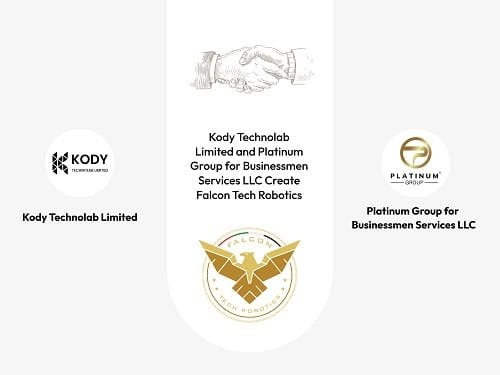Steel Demand: market to add 7-8 mt/y
Tata Steel’s leverage will improve over the next 12 months as the company completes strategic measures to re-focus on the high growth and profitable Indian steel market.
“We expect Tata Steel to gain from sustained high steel prices in the world’s second-largest steel market, given its low-cost position and dominant market share,” believes S&P Global Ratings in its latest outlook on the company on 1 Apr 2019.
The diminishing prospect of the Bhushan Power and Steel acquisition and the deconsolidation of the low-margin Europe business are further positives for Tata Steel’s credit profile.
“As a result, we expect the company’s ratio of funds from operations (FFO) to debt to improve to 15%-17% in the fiscal year ending 31 March 2020,” it said.
S&P has revised leverage expectation stems from Tata Steel’s stable earnings over the next 12 months and a reducing debt profile. It expects EBITDA to stabilize at Rs.250 billion-Rs.270 billion, anticipating Tata
Steel’s India business to continue benefitting from stable international steel prices, which should flow through into domestic steel prices.
The demand outlook for steel in India remains robust and Tata Steel is expected to produce and sell near peak capacity utilization.
Government spending on infrastructure and private demand for homes and automobiles continue to drive steel demand in a market where the per capita consumption of steel continues to be well below global and regional averages.
“We expect the market to add 7 million-8 million tons of demand per year, which will easily absorb the planned and in-process capacity expansions of key Indian steel makers over the next three to four years,” said S&P.
S&P no longer believe Tata Steel has a high likelihood of winning Bhushan Power and Steel. This comes after a committee of lenders to Bhushan Power and Steel controlling the bankrupt asset awarded the sale to JSW Steel Ltd and hearings for the resolution plan are underway.
“Therefore, we deconsolidate the debt and earnings expected of the asset, improving Tata Steel’s ratio of FFO to debt by about 2 percentage points over the next 12-18 months,” said the rating agency.
Tata Steel was the highest bidder under the original process deadline, which led S&P to include the asset in its forecasts for Tata Steel.
However, lenders have admitted after the deadline that they received a higher offer from another bidder and the bankruptcy court has thus far ruled in favor of that.
Although Tata Steel retains legal options to contest this outcome, prevailing evidence suggests that the process prefers the highest bidder.
Tata Steel is not the highest bidder and has shown no inclination to revise its bid upward.
Any late legal challenge by Tata Steel to the ongoing process remains a risk to S&P estimates.
“We expect Tata Steel to successfully divest its European business in the next two to three months,” said the agency, pointing out that the process is currently in the advanced stages of European anti-trust approvals.
The resulting deconsolidation is credit positive for Tata Steel because the European business has historically lagged the group in leverage and earnings performance.
“We expect the benefit to be available for nine to 11 months of fiscal 2020 and project a 1.0-1.5 percentage point positive impact on Tata Steel’s FFO-to-debt ratio.”
The acquisition of Usha Martin’s steel business and the divestment of Tata Steel’s Southeast Asia business each has a marginal impact on the credit profile although these steps support Tata Steel’s pivot to India’s steel market and its increased share of downstream value-added capacities.
Tata Steel’s leverage is substantially higher than regional and global peers’, all of whom have reduced debt materially in fiscal 2018 and fiscal 2019 using upcycle cash flow.
In contrast, Tata Steel has consumed its cash flow for acquisition and capital expenditure (capex).
While a fall in global steel prices is not in S&P base case, a number of industry and macroeconomic stresses continue to build, including increasing steel production in China, disruption from trade war and slower Chinese growth.
Tata Steel’s higher leverage leaves the company more exposed to a potential downcycle than other steel makers.
“We expect no material acquisitions and a largely back-loaded capex profile for Tata Steel’s ongoing expansion in Kalinganagar,” said S&P.
“Any outsized spending by Tata Steel on new acquisitions would be a risk to our estimates although we view this risk to be low,” believes S&P.
There are no large steel mills left to be auctioned in Indian bankruptcy courts.
ABJA, a 100%-owned subsidiary, is an integral part of the group and its sole purpose is to raise funding for the group. “We expect ABJA to continue to benefit from Tata Steel’s long-term commitment to
the subsidiary. We therefore rate ABJA the same as Tata Steel,” said S&P.
The positive outlook reflects the rating agency’s view that Tata Steel continues to benefit from a stable pricing environment for steel over the next 12 months.
The diminishing prospect for the Bhushan Power and Steel acquisition implies that Tata Steel’s FFO-to-debt ratio is likely to improve sustainably above S&P upgrade trigger of 15% over the next 12 months.
“We would upgrade Tata Steel over the next six to nine months if we believe its FFO-to-debt ratio will sustain above 15%,” said S&P.
Key indications will be Tata Steel’s unit profitability staying at or above current levels and a divestment of the Europe steel business in line with expectations.
“We would revise the outlook to stable if a fall in steel prices leads to Tata Steel’s stand-alone India business EBITDA declining sustainably below Rs.12,000 per ton, leading to its FFO-to-debt ratio falling sustainably below 15%,” said S&P. fiinews.com










